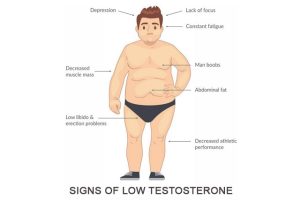The prostate is a small gland in the male reproductive system that plays a crucial role in the production of seminal fluid. As men age, they may experience various prostate problems that can affect their sexual health. One of the most common issues related to prostate health is erectile dysfunction (ED). In this article, we will delve into the relationship between prostate problems and erectile dysfunction, the common symptoms, and the available treatment options.
Prostate Issues That Can Lead to Erectile Dysfunction
There are several prostate issues that can contribute to erectile dysfunction. Some of the most common ones include:
- Prostatitis: Prostatitis is an inflammation of the prostate gland, often caused by bacterial infections. This condition can lead to painful urination, lower back pain, and erectile dysfunction.
- Benign Prostatic Hyperplasia (BPH): BPH is an enlargement of the prostate gland, which can cause urinary problems and, in some cases, erectile dysfunction.
- Prostate Cancer: Prostate cancer is the most serious prostate issue and can cause various symptoms, including erectile dysfunction.
Symptoms of Prostate Problems and Erectile Dysfunction
It is essential to be aware of the symptoms associated with prostate problems and erectile dysfunction to seek proper medical attention. Some of the most common symptoms include:
- Difficulty achieving or maintaining an erection
- Painful ejaculation
- Blood in semen or urine
- Frequent urination, especially at night
- Weak or interrupted urine flow
- Pain or discomfort during urination
Diagnosing Prostate Problems and Erectile Dysfunction
If you suspect that you might be experiencing prostate problems or erectile dysfunction, it is crucial to consult a medical professional. A thorough examination and medical history will be necessary to diagnose the issue accurately. Some common diagnostic tests for prostate problems and erectile dysfunction include:
- Digital Rectal Exam (DRE)
- Blood tests, including Prostate-Specific Antigen (PSA)
- Urinalysis
- Imaging tests, such as ultrasound or MRI
- Cystoscopy
Treatment Options for Prostate Problems and Erectile Dysfunction
There are various treatment options available for prostate problems and erectile dysfunction. Depending on the specific issue and its severity, your healthcare provider may recommend one or more of the following treatments:
- Medications: Prescription medications, such as alpha-blockers, 5-alpha reductase inhibitors, and phosphodiesterase type 5 inhibitors (PDE5 inhibitors), can help relieve symptoms and improve erectile function.
- Lifestyle Changes: Adopting a healthier lifestyle, including regular exercise, a balanced diet, and stress management techniques, can improve prostate health and erectile function.
- Minimally Invasive Procedures: In some cases, minimally invasive procedures, such as transurethral microwave thermotherapy (TUMT), transurethral needle ablation (TUNA), or laser therapy, may be recommended to treat prostate problems and alleviate erectile dysfunction.
- Surgery: In severe cases or when other treatments have failed, surgery may be necessary to address prostate problems and erectile dysfunction. Some surgical options include transurethral resection of the prostate (TURP), prostatectomy, or penile implants.
Prevention of Prostate Problems and Erectile Dysfunction
Preventing prostate problems and erectile dysfunction involves maintaining a healthy lifestyle and being proactive about your sexual health. Some steps you can take to reduce your risk include:
- Regular medical check-ups, including prostate exams
- Maintaining a healthy diet rich in fruits, vegetables, and whole grains
- Engaging in regular physical activity
- Limiting alcohol consumption and avoiding smoking
- Managing stress effectively through relaxation techniques, such as meditation or yoga
The Role of Pelvic Floor Exercises in Improving Erectile Dysfunction
Pelvic floor exercises, also known as Kegel exercises, can help strengthen the muscles that support the pelvic organs and improve blood flow to the penis. This may, in turn, help improve erectile function. Some steps to perform pelvic floor exercises include:
- Identify the correct pelvic floor muscles by stopping your urine flow mid-stream or tightening the muscles that prevent you from passing gas.
- Tighten and hold these muscles for 5-10 seconds, then relax them for an equal amount of time.
- Repeat this process for 10-20 repetitions, three times a day.
The Importance of Open Communication with Your Partner
Dealing with prostate problems and erectile dysfunction can be challenging for both you and your partner. Open communication is vital in addressing these issues and maintaining a healthy sexual relationship. Some tips for effective communication include:
- Discuss your feelings, concerns, and fears openly with your partner.
- Be supportive and understanding of each other’s needs and emotions.
- Seek professional help, such as couples counseling or sex therapy, if needed.
Conclusion
Prostate problems and erectile dysfunction are common issues that can significantly impact a man’s sexual health and overall well-being. By understanding the relationship between these two conditions, recognizing the symptoms, and seeking prompt medical attention, you can effectively manage and treat these issues. Adopting a healthier lifestyle, exploring various treatment options, and maintaining open communication with your partner can help improve your sexual health and enhance your quality of life.







